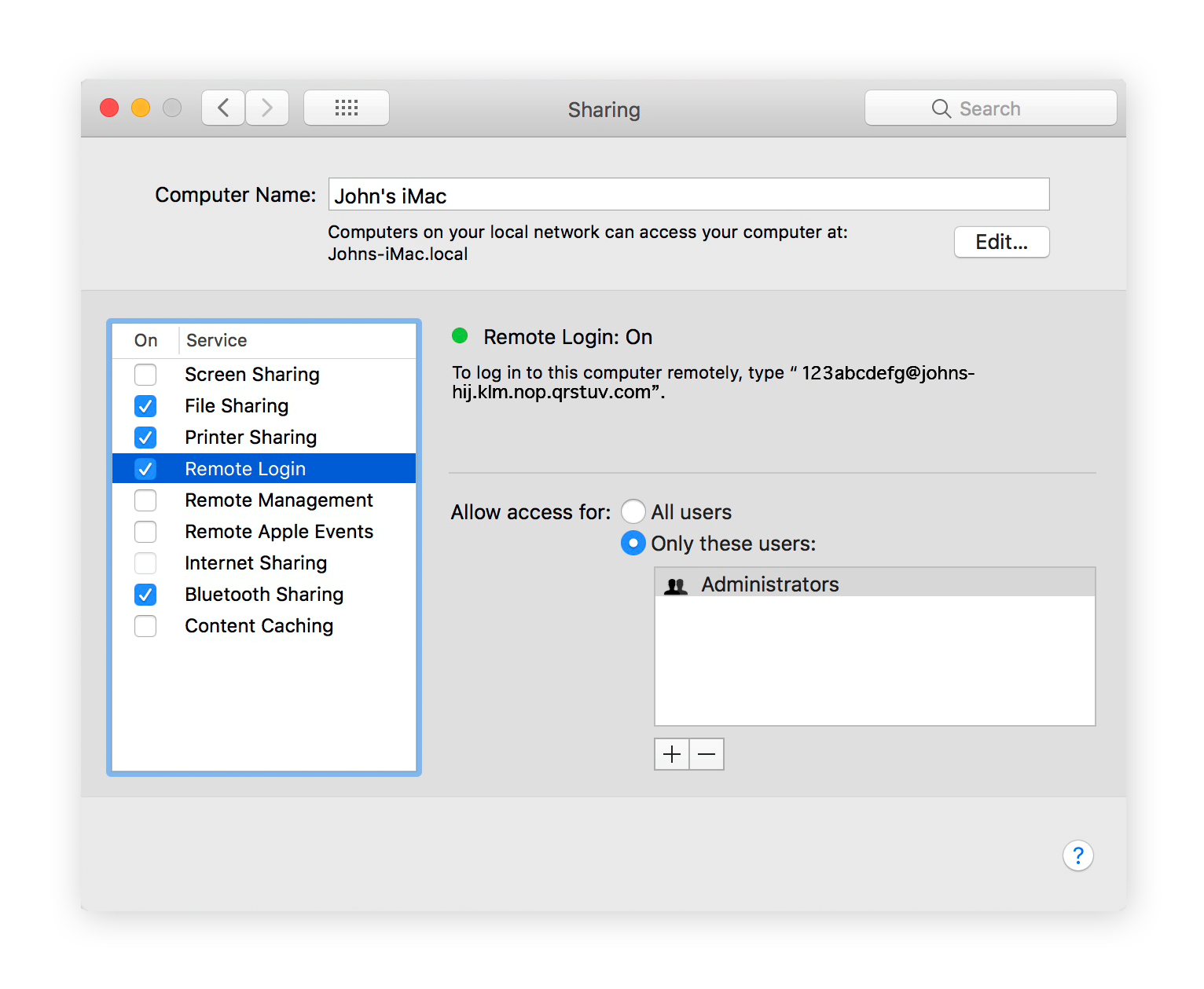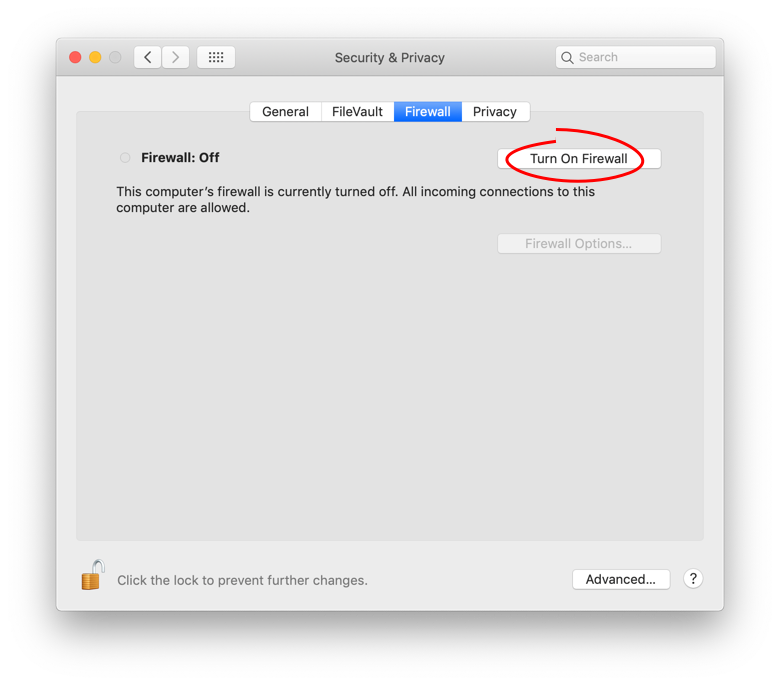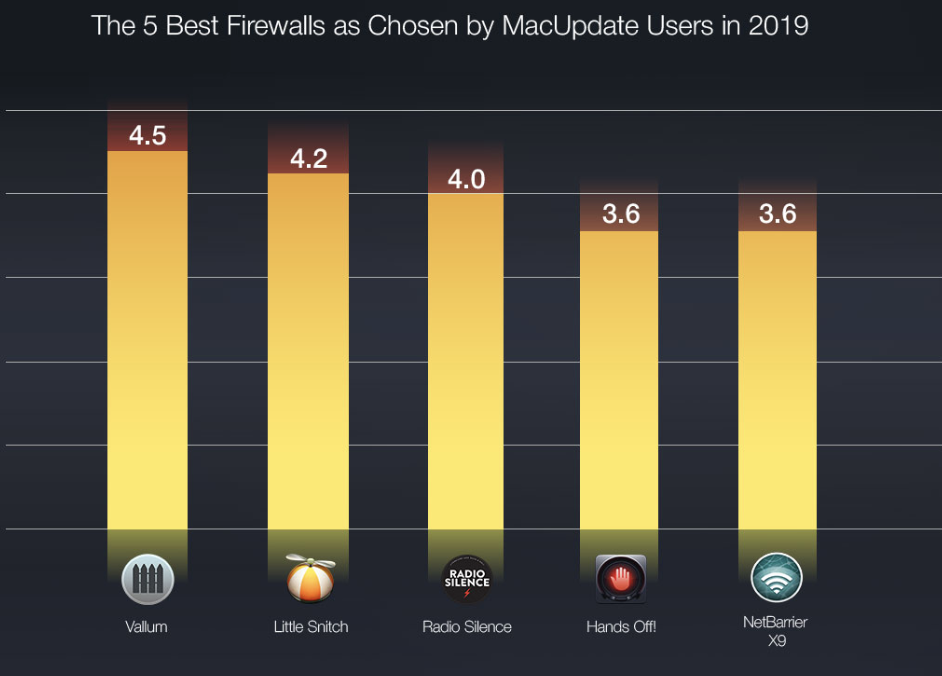Firewalls monitor and regulate the data moving on and off your computer or network. They can keep criminals out while allowing legitimate network traffic in. Mac OS X comes with not one but two.
OS X v10.5.1 and later include an application firewall you can use to control connections on a per-application basis (rather than a per-port basis). This makes it easier to gain the benefits of firewall protection, and helps prevent undesirable apps from taking control of network ports open for legitimate apps.
Adwords editor for mac. So right off the bat, firewalls sound a lot like antivirus software designed to protect your computer from threats, but there are differences. Having a firewall does not negate the need for antivirus software, even though it does protect your computer to a certain degree. In the case of antivirus, you can think of it like a metal detector of sorts. Click the Firewall tab to display the settings you see below. If your Mac’s firewall hasn’t yet been turned on, click the Turn On Firewall button to start the ball rolling. (In the above image, this button has toggled to Turn Off Firewall because your Mac’s firewall is already on.) Is the Turn On Firewall button disabled? Here's how to turn on the Firewall on a Mac. Printer sharing: Shares any printer connected to your Mac with other computers on the network, again including PCs. Should be turned off if you're.

Configuring the application firewall in OS X v10.6 and later
Use these steps to enable the application firewall:
- Choose System Preferences from the Apple menu.
- Click Security or Security & Privacy.
- Click the Firewall tab.
- Unlock the pane by clicking the lock in the lower-left corner and enter the administrator username and password.
- Click 'Turn On Firewall' or 'Start' to enable the firewall.
- Click Advanced to customize the firewall configuration.
Configuring the Application Firewall in Mac OS X v10.5

Make sure you have updated to Mac OS X v10.5.1 or later. Then, use these steps to enable the application firewall:
- Choose System Preferences from the Apple menu.
- Click Security.
- Click the Firewall tab.
- Choose what mode you would like the firewall to use.
Advanced settings

Block all incoming connections
Selecting the option to 'Block all incoming connections' prevents all sharing services, such as File Sharing and Screen Sharing from receiving incoming connections. The system services that are still allowed to receive incoming connections are:
- configd, which implements DHCP and other network configuration services
- mDNSResponder, which implements Bonjour
- racoon, which implements IPSec
To use sharing services, make sure 'Block all incoming connections' is deselected.
Allowing specific applications
To allow a specific app to receive incoming connections, add it using Firewall Options:
- Open System Preferences.
- Click the Security or Security & Privacy icon.
- Select the Firewall tab.
- Click the lock icon in the preference pane, then enter an administrator name and password.
- Click the Firewall Options button
- Click the Add Application (+) button.
- Select the app you want to allow incoming connection privileges for.
- Click Add.
- Click OK.
You can also remove any apps listed here that you no longer want to allow by clicking the Remove App (-) button.
Automatically allow signed software to receive incoming connections
Applications that are signed by a valid certificate authority are automatically added to the list of allowed apps, rather than prompting the user to authorize them. Apps included in OS X are signed by Apple and are allowed to receive incoming connections when this setting is enabled. For example, since iTunes is already signed by Apple, it is automatically allowed to receive incoming connections through the firewall.

If you run an unsigned app that is not listed in the firewall list, a dialog appears with options to Allow or Deny connections for the app. If you choose Allow, OS X signs the application and automatically adds it to the firewall list. If you choose Deny, OS X adds it to the list but denies incoming connections intended for this app.
If you want to deny a digitally signed application, you should first add it to the list and then explicitly deny it.
Some apps check their own integrity when they are opened without using code signing. If the firewall recognizes such an app it doesn't sign it. Instead, it the 'Allow or Deny' dialog appears every time the app is opened. This can be avoided by upgrading to a version of the app that is signed by its developer.
Enable stealth mode
Enabling stealth mode prevents the computer from responding to probing requests. The computer still answers incoming requests for authorized apps. Unexpected requests, such as ICMP (ping) are ignored.
Firewall limitations
The application firewall is designed to work with Internet protocols most commonly used by applications – TCP and UDP. Firewall settings do not affect AppleTalk connections. The firewall may be set to block incoming ICMP 'pings' by enabling Stealth Mode in Advanced Settings. Earlier ipfw technology is still accessible from the command line (in Terminal) and the application firewall does not overrule any rules set using ipfw. If ipfw blocks an incoming packet, the application firewall does not process it.
Unlike the firewall settings in Windows, the built-in firewall for Mac OS X is not enabled by default. If you’ve recently purchased a new Mac computer, then you will have to go in and turn on the firewall manually if you want that protection. The steps to do so are quite simple and user-friendly, but the first question is this: do you need to enable the firewall on your Mac?The short answer is “yes.” Apple leaves the firewall disabled by default because it can cause issues with certain applications. In most situations, though, having the firewall enabled will offer more benefits than drawbacks. It only takes one system vulnerability or rogue app, exploitable through the Internet, for your machine to be remotely accessed by a hacker. By enabling the firewall, you bring up the shields and protect your sensitive files and personal information from such a possibility. Sure, it’s probably true that the average Mac user will rarely experience a situation where their system is vulnerable in this way. Regardless, enabling the firewall is a good measure to take just in case.What the Firewall Does
A firewall is a system that blocks or allows connections between your network ports and the applications on your computer. By monitoring these connections, the firewall is able to prevent a third party from exploiting the apps on your machine. It essentially shuts down unauthorized incoming connections before they reach your apps—all without tampering with your outgoing connections and impairing your network access. Most Mac programs—whether they were installed on your computer as out-of-the-box apps or downloaded from a trusted developer via the Apple App Store—aren’t vulnerable to incoming connections. As a result, unless you’re running an app from an untrusted or unknown publisher or using some sort of server program where monitoring connections is actually essential, your Mac OS X firewall usually won’t be doing much.The exception is if you are using a public network—whether in coffee shops, libraries, or airports. In such environments, you can never be sure who else is on your network and whether or not they might be looking for open ports through which to invade your computer. Just to be safe, it’s a good idea to switch on your Mac’s firewall before hopping on a public network.
Most Mac programs—whether they were installed on your computer as out-of-the-box apps or downloaded from a trusted developer via the Apple App Store—aren’t vulnerable to incoming connections. As a result, unless you’re running an app from an untrusted or unknown publisher or using some sort of server program where monitoring connections is actually essential, your Mac OS X firewall usually won’t be doing much.The exception is if you are using a public network—whether in coffee shops, libraries, or airports. In such environments, you can never be sure who else is on your network and whether or not they might be looking for open ports through which to invade your computer. Just to be safe, it’s a good idea to switch on your Mac’s firewall before hopping on a public network.Turning the Firewall On
The good news is that turning on and configuring your Mac’s firewall is a simple process. Follow the steps below to switch on the built-in firewall in OS X.Open the “System Preferences” menu and click on the “Security & Privacy” in the first row of the menu (the one with the house icon).In the “Security & Privacy” window, select the “Firewall” tab. To make changes to your settings here, you’ll have to click the lock icon in the bottom left-hand corner of the window and enter your administrator password.Click “Turn On Firewall.”Configuring the Firewall
Now the firewall is switched on, and you can click the lock again to save your new settings. However, you can also go in and configure the firewall settings to match your unique purposes and preferences. One you have enabled the firewall, you will have the option of clicking a new button in the “Security & Privacy” window: “Firewall Options.” Click the button to begin configuring your firewall. Read on for a review of the available configuration options.Mac Security
Once you’ve made your configurations, click “OK” to close the “Firewall Options” window, and then click the lock in the initial “Firewall” window to save your settings.Firewall For Mac Computers Software
Conclusion
Best Firewall For Mac
While the built-in OS X firewall won’t provide a ton of extra protection for the average Mac user, it can be useful for people who use sharing apps or access public networks on a regular basis. Just don’t treat firewall like the “be all, end all” of your computer security. If you want to be truly protected, it’s a good idea to lock your computer down with antivirus software, and some Mac experts even recommend looking into more powerful third-party firewalls as an extra precaution.